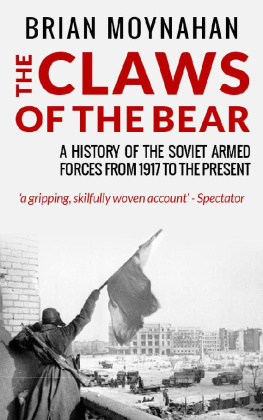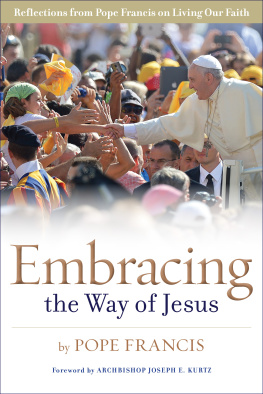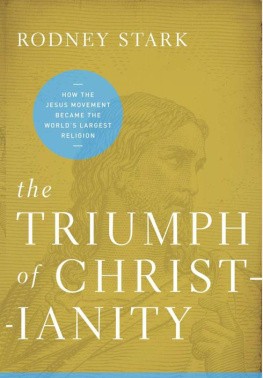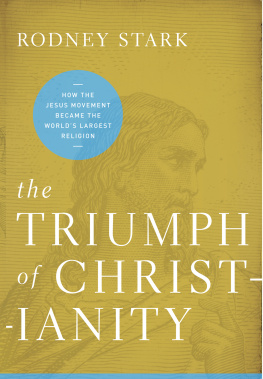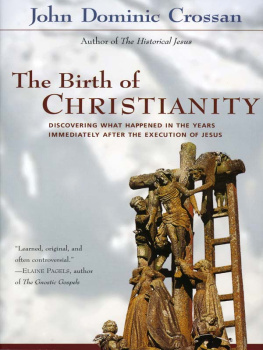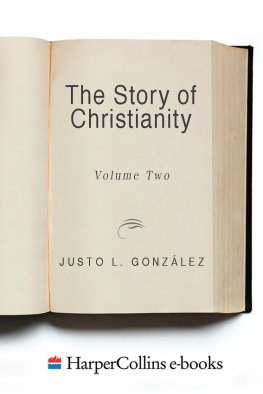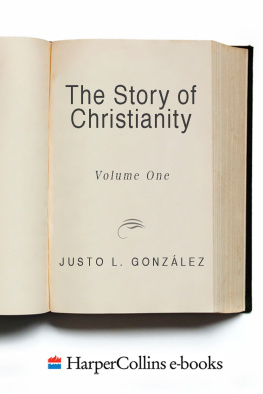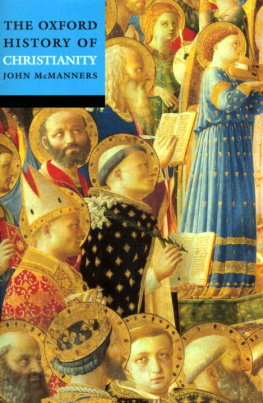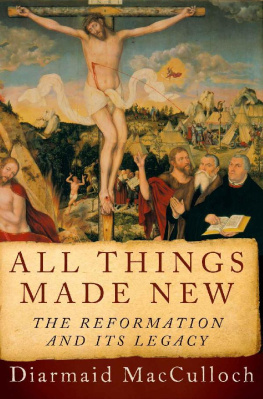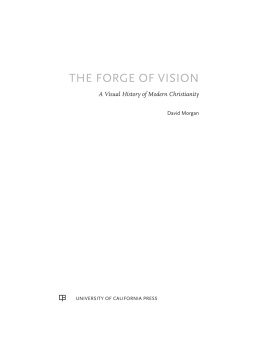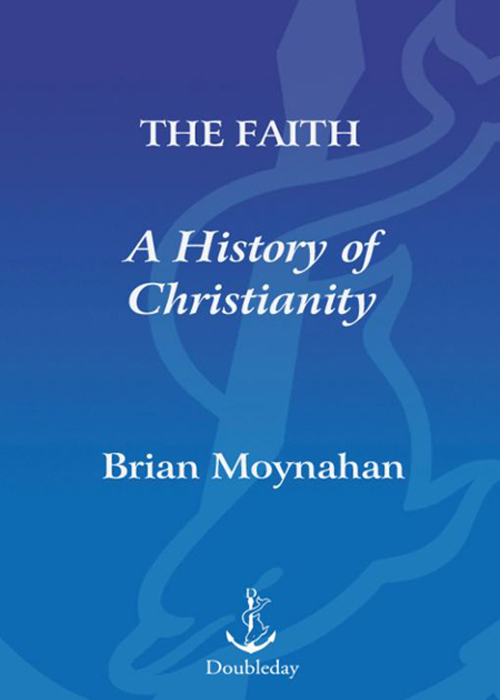

Table of Contents
For
Con and Katie
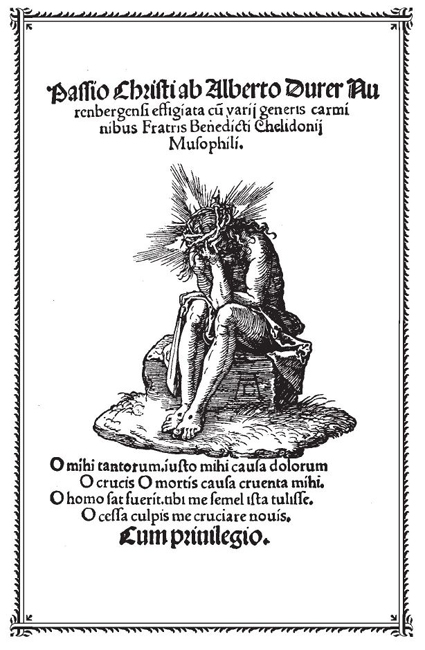
INTRODUCTION

Over the past two thousand years, a handful of vulnerable and persecuted Christiansthey were crucified or set on fire, the historian Tacitus wrote of them in Neros Rome, so that when darkness came they burned like torches in the nighthas grown to become the worlds greatest congregation, embracing almost two billion souls.
This book is an attempt to trace the outlines of the extraordinary journey that Christianity has made since the Cross.
It is a story of fierce and incomparable scope. Christianity has inspired the noblest and most searching minds. It has produced martyrs whose sufferings have emulated Christs own Passion. It created the first orders of men and women devoted to the sick and vulnerable, the first hospitals and lazar houses. The cathedrals, paintings, music, and sculpture produced by its believers are among the most sublime artifacts on earth. The great universities, of the New World and the Old, are Christian foundations.
It has also given succor to the censor, the inquisitor, the slaver, and the witchfinder. It was used to underpin conquest and empire. The burning alive of heretics was for several centuries another characteristic.
There is something of the wolf to the religion that adores the Lamb, and the characters to be found in these pages mirror every condition of humanity. There are crusaders and pacifists, mystics, hermits, jolly friars and joyless puritans, polygamists, flagellants, missionaries both sensitive and crass, misogynists, heroines, bigots, popes, emperors, and the frankly deranged.
They appear on every continent. Christianity has been a global enterprise since St. Paul insisted that it must evangelize the Gentiles. Long before the Puritans sailed to settle in the Americas, there were Christians in India and China and at the court of the Mongol Khan.
The faith has survived many catastrophes, the loss of old heartlands to Islam, self-inflicted wars of religion, and, more recently, assaults by Soviet and Maoist Communists. Christianity is like a nail, Yemelian Yaroslavsky, chairman of Stalins League of the Militant Godless, complained. The harder you strike it, the deeper it goes. Islamic fundamentalists would do well to reflect on that.
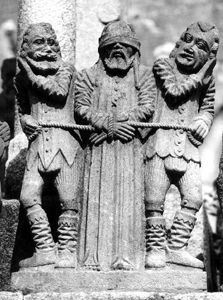
The mocking of Christ from a sixteenth-century Calvary in Brittany in France. Jesus had predicted that he would be mocked, and shamefully entreated, and spat upon in Jerusalem. This fulfilled the prophecy in Isaiah of a Messiah who was despised, and rejected of men. He was a man of sorrows... wounded for our transgressions... bruised for our iniquities who at his death bore the sins of many, and made intercession for the transgressors...
It is expanding briskly in Asia and Africa. Converts in China number in the scores of millions, proof that, as Tertullian observed eighteen hundred years ago, the blood of martyrs is the seed of the church. Seven in ten Americans continue to believe that Jesus is the Son of God. Only in Europe and in the surviving Christian pockets in the Middle East does the faith seem to be in decline.
It is, of course, impossible to do justice to a subject so immense in sweep and so subtle in detail. I hope, however, to have caught some essence of the faith, its restlessness and experimentation, its cruelties and kindnesses, and the way in whichby citing the inspiration of grace or the Holy Spiritindividuals have so often claimed it for their own.
CHAPTER I
THE CROSS

Eli, Eli, lamasabachthani? cried the dying man. My God, my God, why hast thou forsaken me? (Matt. 27:46). This forlorn reproach was delivered from a hillside on the periphery of the Roman Empire, in a strange tongue unknown to the vast majority of its subjects, by a condemned man of profound obscurity who had an alien belief in a single God. A darkening sky; a claim that the veil in the Temple of Solomon, far down the slope from the execution ground, was rent in twain at the moment of death; a strange earthquake, mentioned only in Matthews gospel, that split open rocks and opened tombs but did no damage to buildingsthe Fathers response to the crucifixion of the Son was modest even in the Gospels that proclaimed it.
Human reaction was as muted. The Roman governor who had authorized the executionwith such extreme reluctance that some Christians later honored his memory with a feast daymarveled only that Jesus had died so swiftly, in little more than three hours. To the soldiers who carried it out, the crucifixion was mere routine, a standard punishment for slaves and non-Romans, that ended in the traditional perk of sharing out the victims clothes. The priests who had demanded the death noted with sarcastic satisfaction: he saved others, himself he cannot save (Matt. 27:42). No disciple or relative was bold enough to claim the body for burial. He had been almost recklessly brave at his trial; they had expected miracles at his death, and none had occurred. They hid their ebbing belief behind barred doors in the steep streets of Jerusalem.
The painters and sculptors who were to fill the world with his image worked from imagination alone. No physical description of Jesus was left by any who knew him; no hint existed of the color of the eyes, the timbre of the voice, the carriage of the head. His age, and the year of his birth and death, is not accurately recorded. The abbot Dionysius Exiguus, who created our system of dating years from the conception of Christ, as anno Domini, the year of the Lord, made his calculations five hundred years later. The abbot estimated that Jesus was born in the year 753 A.U.C. of the Roman system of dating ab urbe condita, from the founding of the city of Rome. He set this as A.D. 1, with previous years in receding order as before Christ, B.C. or A.C. for ante Christum in Latin. But Matthews gospel says that Jesus was born in Bethlehem... in the days of Herod the King. Herod is known to have died in 4 B.C., and most modern scholars date Jesus birth to 6 or 5 B.C. The dates of his brief ministryJohns gospel supports a ministry of two or three years, the others of a single yearand his final journey to Jerusalem are also uncertain. The crucifixion may have been as early as A.D. 27, instead of the traditional date of A.D. 33; it is certain only that he died on a Friday in the Jewish lunar month of Nisan, which straddles March and April.
A single incident is known of his childhood; as a twelve-year-old, he went missing on a visit from his native town of Nazareth to Jerusalem until his parents found him in the temple, sitting in the midst of the doctors both hearing them and asking questions (Luke 2:46). He mayor may nothave worked as a carpenter in his youth. His public ministry probably lasted little more than two years at most and seemed fragile and incomplete. His teaching was informal, often in the open air; his message was literally hearsay, for no contemporary notes were written down. It demanded an absolute morality and selflessness never expressed before; it lacked the familiar comfort of an established rite, and he had taught only a single prayer, the brief formula beginning Our Father, which art in heaven...
Next page

